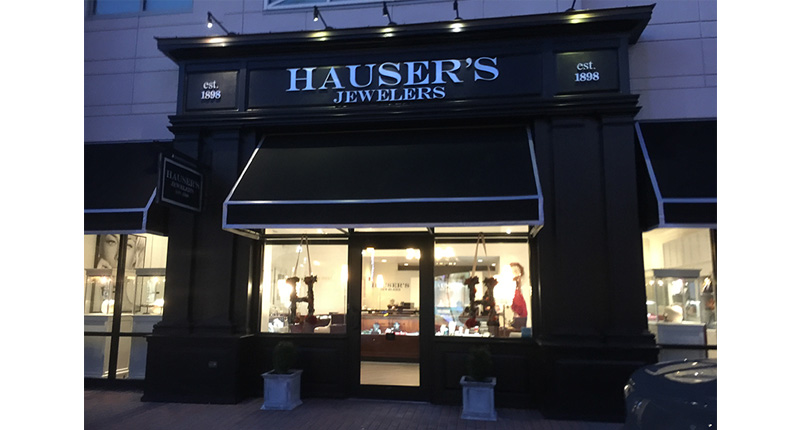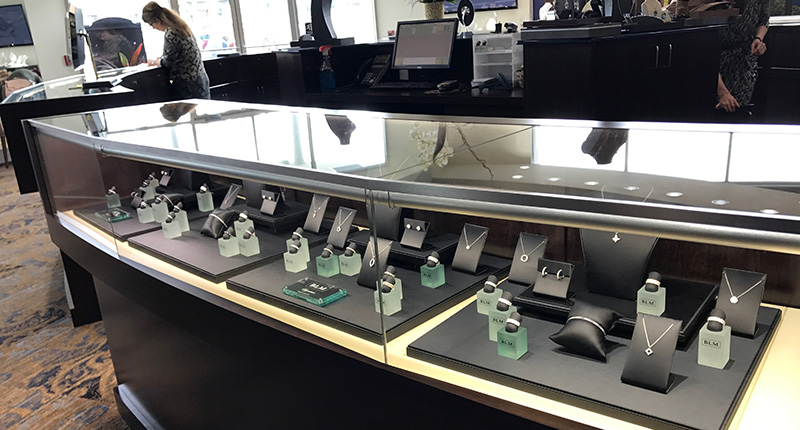In the recent multi-shipment seizure, CBP also found counterfeit Audemars Piguet, Moncler, and Chrome Hearts items.
Squirrel Spotting: Turn Your Store Upside Down
Change can be more powerful than you think, columnist Peter Smith writes.

Do you ever become frustrated wondering why your salespeople seem always to want to sell what you don’t have in stock, while seemingly ignoring what you do have in stock? As it turns out, there may be a psychological reason for that.
In “The Power Of Moments,” Chip and Dan Heath wrote about the idea that we become inured to repetition and sameness and that by mixing things up, it can have an affect far beyond what might reasonably be expected from a given change.
One of the examples that the authors referenced was a study where subjects were shown images of a simple brown shoe. Over and over the image of the shoe continued to be shown and, when the subjects were sufficiently accustomed to the routine and repetition of the same image, they were then shown a single image of a clock, inserted within the cycle of brown-shoe images.
The Heaths wrote that when the subjects later were interviewed by the researchers (Vani Pariyafdath and David Eagleman of Baylor College of Medicine), they gave infinitely more weight to the image of the clock, believing it had been on the screen far longer than it actually was.
What the subjects were really responding to was the novelty, the change, the picture of the clock represented. The researchers referred to this as “the oddball effect.” They had become so conditioned to the routine that they unconsciously craved change, and they were willing to afford a good deal more benefit (more time on the screen) to the different image (the clock) than was warranted because they were hungry for change.
In considering situations in our business where we might insert our picture of a clock, one of the most obvious and least-practiced strategies is turning your retail store upside down. I don’t mean literally turning the store upside down (very difficult to do, unless you’re on a ship and then not advised if you are), but metaphorically breaking the pattern of sameness and predictability that can result in salespeople seeing products as, well, brown shoes.
For most stores, there is an understandable pattern and predictability to how things are set up.
If
There are very pragmatic considerations for setting the store up the way we do. Some of those might include ease of set-up and breakdown at the beginning and end of the day. The familiarity can also help your team to feel comfortable in their environment, and that itself helps instill confidence and ease of transaction for your customers. There’s nothing quite like the disorientation one feels when you first start in a new store, thinking that you might never remember where everything is.
There are also security benefits to having a consistent and obvious layout; “Hey, did anyone see that diamond and tanzanite ring that was here?” If you knew that it was always in a specific spot, you are more apt to notice when it is missing.
Familiarity, however, can also be a very dangerous drug, and it is all the more so in jewelry stores. The last thing we can afford in an emotion-centric business is apathy or boredom. We can marry our own biases and seek only those products that appeal to us, while ignoring a great many products that have been relegated unconsciously in our minds and peripherally in our showcases.
Kit Yarrow wrote in “Decoding the New Consumer Mind” that, “Products located in the center of a horizontal display get longer looks and are more likely to be chosen than those on the left and right.”
That means that something as simple as how we choose to merchandise our cases can help to cement customers’ and employees’ views of a given product. If the products are typically merchandised on the ends of the cases, they are more likely to be relegated to the nether regions of our minds also.

Making big changes is no small task. There are endless reasons and rationalizations for not doing it, or for postponing it. There could be signage affixed to walls, duratrans dedicated to specific brands or categories, in-case branding or color-schemes that can play havoc if changed, etc. Or, maybe you just don’t want the hassle of having to do it.
Making the big change, however, can help to reshape the mindset and revitalize the energy of your team, as it forces them to reconsider their conventions and routines. It can also delight and surprise your customers. My wife told me the other day that a key part of the Wegmans strategy is to move things around on a regular basis and surprise their customers.
Some members of your team may fight the changes and, if you really get after it, you might have to put in some extra hours to make it happen. You might even question your own sanity as you plan and execute it. However, a job well done will cast your store in an entirely new light and it will create that “oddball effect” for your staff and for your customers that Dan and Chip Heath wrote about in their book. It’ll break the monotony of the endless brown shoe images and force people to view things in a new light.
There’s no better way to start the year than by taking the conventional, the predictable, and the routine and messing it up.
Pull your team together and tell them that the meeting is designed to decide HOW you will do it, and not whether you will do it. And have some fun while you’re at it!
Happy New Year!
Peter Smith is president of Vibhor, a public speaker and author of “Sell Something” and “Hiring Squirrels.” He spent 30 years building sales teams in retail and wholesale and he can be contacted at dublinsmith@yahoo.com, peter@vibhorgems.com, or on LinkedIn, Facebook or Twitter.
The Latest

Helzberg’s Chief Retail Officer Mitch Maggart shared details about its tests of a new store concept rooted in an elevated luxury experience.

Jewelers of America execs and National Jeweler editors discuss tariffs, the sky-high gold price, and the engagement that broke the internet.

How Jewelers of America’s 20 Under 40 are leading to ensure a brighter future for the jewelry industry.

The luxury goods company said founder Ippolita Rostagno will remain at the brand’s helm.


Laura Burdese, who joined the Italian luxury brand in 2022, will take on the role in July.

The National Jeweler editors revisit the most noteworthy industry happenings and design trends from 2025.

Roseco’s 704-page catalog showcases new lab-grown diamonds, findings, tools & more—available in print or interactive digital editions.

Need a gift for the cat lover who has everything? Look no further than our latest Piece of the Week.

It purchased the “Grosse Pièce,” an ultra-complicated Audemars Piguet pocket watch from the ‘20s, for a record-breaking price at Sotheby’s.

The lab-grown diamond grower now offers custom engagement and fashion jewelry through its Kira Custom Lab Jewelry service.

Chandler got his start at Michelson Jewelers and has served as DCA president and CEO since 2001. He will retire at the end of the month.

The boutique is slated to open this week inside Terminal 8, offering pre-owned Rolex watches and more to international travelers.

Sponsored by Digital Monitoring Products

The special-edition egg pendant ingested in a New Zealand jewelry store was recovered after a six-day wait.

Associate Editor Natalie Francisco plays favorites with Piece of the Week, selecting a standout piece of jewelry from each month of 2025.

The “Love and Desire” campaign is inspired by the magic that follows when one’s heart leads the way, said the brand.

Two awardees will receive free tuition for an educational course at the Swiss lab, with flights and lodging included.

Berta de Pablos-Barbier will replace Alexander Lacik at the start of January, two months earlier than expected.

Sotheby’s held its first two jewelry sales at the Breuer building last week, and they totaled nearly $44 million.

Winners will receive free registration and lodging for its fourth annual event in Detroit.

Here are six ideas for making more engaging content for Instagram Reels and TikTok, courtesy of Duvall O’Steen and Jen Cullen Williams.

The honorees include a notable jewelry brand, an industry veteran, and an independent retailer.

Carlos Jose Hernandez and Joshua Zuazo were sentenced to life without the possibility of parole in the 2024 murder of Hussein “Sam” Murray.

Yood will serve alongside Eduard Stefanescu, the sustainability manager for C.Hafner, a precious metals refiner in Germany.

Set in a Tiffany & Co. necklace, it sold for $4.2 million, the highest price and price per carat paid for a Paraíba tourmaline at auction.

The jeweler’s “Deep Freeze” display showcases its iconic jewelry designs frozen in a vintage icebox.


























